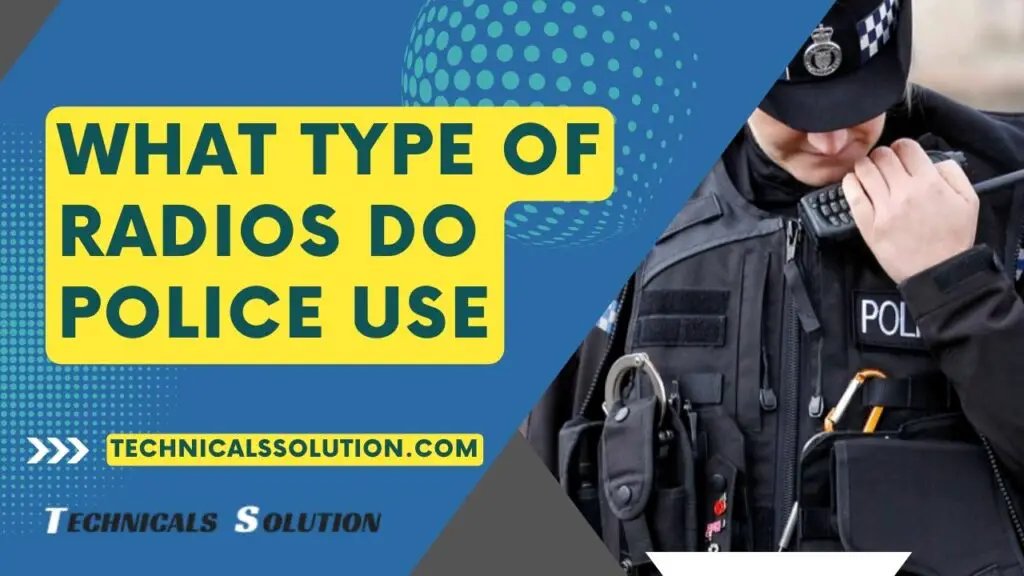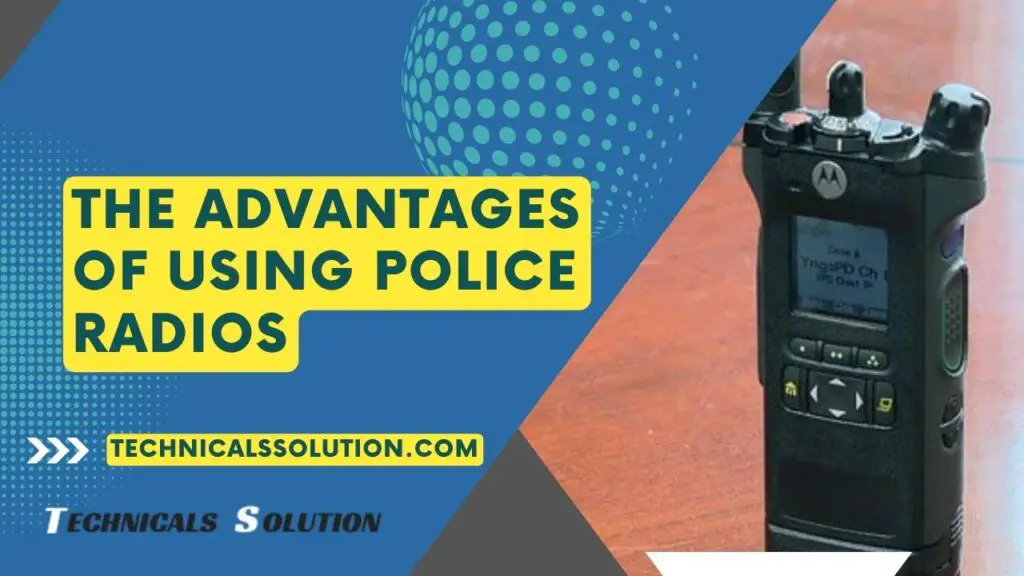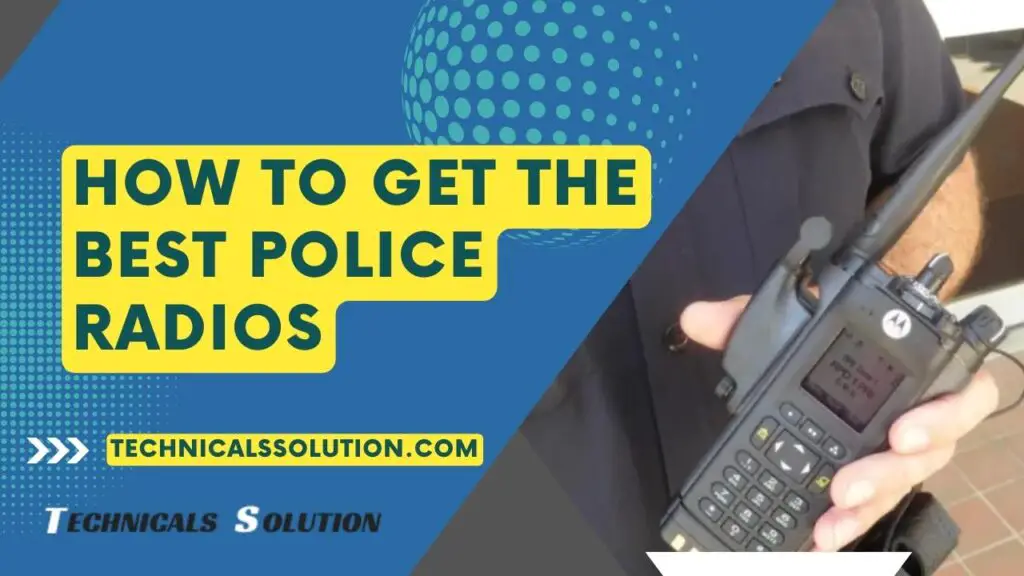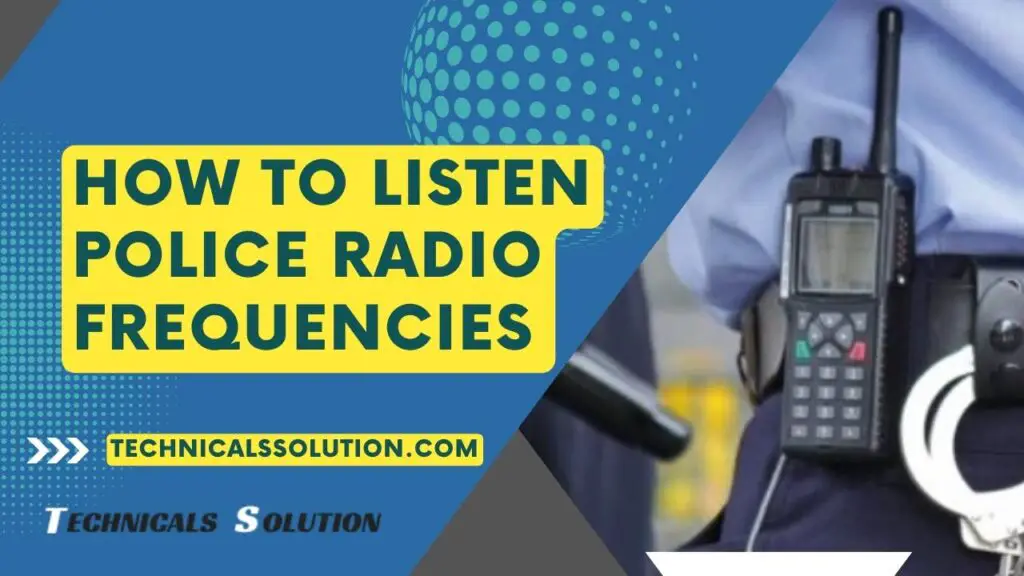Last updated on September 4th, 2023 at 11:07 pm
Discover the types of radios used by police officers for communication, including handheld, mobile, and base station radios. Learn about their features and benefits.
Introduction
The police have to use a number of different types of radios for a number of different reasons. In order to do this, different types of radios are needed. Here are some things to know about these types of radios. This may include telling the dispatch center where they are or informing other officers who they are looking for.
What Type of Radios Do Police Use?
The type of radio used by police departments can depend on a number of factors, and there are a variety of radios that can be used. In addition to the department’s size, there are also other factors to consider – a larger department may have a larger budget to purchase more sophisticated and expensive radios, while a smaller department may have to settle for simpler models.
1. Consider the Terrain
It is also important to consider the terrain that the department covers – a department operating in a rural area may require a different level of support than one operating in an urban area.

The three types of radios most commonly used by police departments are handheld radios, mobile radios, and base station radios, among others. It is easy for police officers to carry and use handheld radios since they are small and portable.
2. Mobile Radio
A mobile radio is usually a feature that is installed in a police vehicle, and it allows officers to communicate hands-free. Typically, base station radios are larger and more powerful than handheld radios or mobile radios, and they are usually found in police stations or other fixed locations.
3. Trunked radio
Moreover, some police departments employ trunked radio systems that provide coverage over a large geographical area through an interconnected network of base stations. A trunked radio system allows police officers to communicate across multiple jurisdictions and can be an effective and cost-effective solution for large agencies.
4. Dispatch Radios
To two-way radios, walkie-talkies, and dispatch radios, police departments may also use a variety of other communication devices to communicate, such as two-way radios, walkie-talkies, and dispatch radios.
Final Words
As a police officer, a two-way radio is one of the most common choices he or she can use, as they allow both communication and information transfer. Police departments often use walkie-talkies in areas where the use of two-way radios is not permitted, such as in schools or hospitals. Police dispatch use dispatch radios to communicate with officers in the field.
The design of Police Radios
In addition to their ruggedness and reliability, police radios feature a number of features that make them ideal for use in law enforcement. The following features make police radios ideal for law enforcement use:
With their design and features, police radios are intended to be reliable and easy to use, making them the perfect tool for law enforcement.
The Advantages of Using Police Radios
In law enforcement and emergency services, police radios play a vital role in enabling officers to communicate with one another and with dispatchers, and they can also be used in a variety of ways.

1. Stay in touch
Police radios provide officers with the ability to stay in touch with each other, which is especially important in large agencies where officers may be scattered across a wide area. Officers can also communicate with dispatch using police radios, which can help coordinate responses to calls and incidents.
2. Versatility
As well as their versatility, police radios can be used in a variety of situations. For instance, they can be used to coordinate a response to a call, request backups, or inform dispatchers of an incident. A police radio can also be used for emergency situations, such as requesting medical assistance from an officer.
There are many situations in which police radios can be invaluable. They allow officers to stay in touch with one another as well as with dispatch, and they can be used in a variety of settings.
Disadvantages of Using Police Radios
Radios used by police have several disadvantages.
How to Get the Best Police Radios?
Some key factors need to be taken into account in order to get the best police radios.

There are few radios that can match Motorola’s quality when it comes to durability. In terms of reception, Motorola radios are some of the most reliable on the market and can pick up a variety of frequencies.
Motorola radios are built to last and can withstand a great deal of abuse. Last but not least, Motorola radios are simple to use and easy to operate, even the most complex models.
Motorola is a great choice for police radios if you want the best possible performance.
How often do police use this frequency?
As part of the Dedicated Short Range Communications Service (DSRCS), the 5.9 GHz band is used for automobile communication.
The Spectrum of Public Safety.
| Frequency | Public Safety MHz Available |
| 25-50 MHz (VHF Low Band) | 6.3 MHz |
| 150-174 MHz (VHF High Band) | 3.6 MHz [non-contiguous] |
| 220-222 (220 MHz band) | 0.1 MHz |
How To Listen to police radio frequencies
An appropriate scanner or radio will allow you to listen to the frequencies used by your local police department. Visit your local police department’s website or contact them directly to find out what frequencies they use.

You will need to find a place to listen to the transmissions once you have a scanner or radio that can pick up the correct frequencies. If you find a local radio station that broadcasts the frequencies of police radio transmissions, you can listen to them live online, or you can find a live stream of their transmissions online through a search engine.
What is VHF, UHF and how does it work?
There are two types of frequencies used for communication. Extremely High Frequency refers to Very High Frequency, while Ultra High Frequency refers to Ultra High Frequency.
The frequencies are used for different purposes, namely FM radio broadcasting and television broadcasting. UHF uses a higher frequency, which allows it to transmit clearer signals than VHF, which works by sending signals over the airwaves. A receiver picks up the signal and converts it into an audio or visual message.
Is VHF or UHF used by the police?
Many believe VHF (very high frequency) is the frequency of choice for police, while others contend UHF (ultra high frequency) is the preferred frequency. However, there is some debate over which type of radio frequencies the police use.

Although police forces around the world use both VHF and UHF radios depending on their specific needs, both are used. For short-range communications, VHF radios are used, whereas UHF radios are used for long-distance communications.
How do you set up your VHF, UHF, and other types of police radios?
First, you will need to find a good location for your VHF, UHF, and other types of police radios. There are a few things you need to do before setting up your radio. The radio should be placed in a location where it will receive a strong signal and where it will not be impacted by other electronic devices. A power source and an antenna are required after you’ve found a good location.
You must then program your radio with the correct frequencies. For VHF radios and UHF radios, you must input the frequencies for your local police department. Depending on which radio you use, you will need to enter the frequencies for each channel you wish to listen to.
The first thing you need to do, once you have set up your radio, is to tune it to the appropriate frequency, which can usually be found by listening to the radio dispatch. Once your radio is correctly tuned up, you may start listening to police communications.
Security and Encryption of Police Radio Systems
Police radio systems are crucial for communication within law enforcement. To ensure the security of this communication, police radio systems are encrypted. Encryption transforms messages into a code that can only be accessed by authorized users.
Police radios work on platforms like P25, a suite that enables digital two-way radios and radio interoperability. This means different departments can communicate with each other effectively. One such device is the Motorola P25 APX two-way radio. Used by several police departments, these police two-way radios provide a safe and efficient communication avenue.
What Are Walkie Talkie Channels for Police?
Walkie Talkie channels for police, known as police frequencies, are utilized for efficient and secure communication. Police walkie talkies typically use 3.6 MHz, 6.3 MHz, VHF high band, and UHF band for transmissions. These frequencies are chosen for two-way radios or walkie talkies as they provide enhanced range, clarity, and interference resistance, making them ideal for law enforcement’s rigorous communication requirements.
Police Radio vs Commercial Radio
Police radio systems, such as the P25, operate on the UHF band and use advanced encryption to secure law enforcement communication, making them highly distinguishable from commercial radios like CB radios. The Federal Communications Commission (FCC) regulates these systems to ensure their effectiveness and interoperability, a feature central to public safety communications.
Reliable brands such as Motorola provide portable radios for on-the-go use. The digital two-way function enhances radio interoperability, a crucial aspect for both police and commercial radios. Unlike commercial radios, police systems are not accessible through conventional radio scanners, further safeguarding police two-way communications.
What You Need to Know About Project 25 Radio
Project 25 (P25) radio is a vital tool in modern law enforcement communication systems. Motorola police radios, among others, utilize the P25 standard to help ensure seamless two-way radio communication across various departments and agencies.
These two-way radio systems cover many police frequencies, allowing for efficient and secure communication in real time. The P25 APX two-way radio series is a popular equipment choice for agencies due to its reliance on the use of P25 technology, providing high-performance service crucial for public safety.
Most Popular Police Radio Accessories
Wireless police radio accessories, such as police handheld and police walkie talkie, have gained popularity among radio operators due to their extended battery life and mobility. These police portable radios are essential pieces of radio equipment, allowing for efficient, long-distance communication even in the toughest of conditions.
FAQ’s
1. What radios do police use UK?
These radios are robust, and powerful, and provide loud, clear audio even in the loudest of environments, which is why the UK police use SC20 TETRA radios for their critical voice communications.
It is important for police officers to be able to clearly hear and understand messages, which is why the SC20 TETRA radios are a popular choice for UK police departments.
2. Can you listen to local police radios?
If you possess a police scanner, which is a device that allows you to tune into the radio frequencies used by law enforcement agencies, you may be able to listen to local police radios.
There are a number of police scanners available, including handheld models and desktop units, some of which can be programmed to receive specific frequencies used by local police departments.
However, it may be illegal to listen to police radio frequencies without authorization in certain regions. If you intend to use a police scanner in your area, you should check the local laws.
3. What are police microphones called?
There are several types of police microphones, including lapel microphones and body-worn microphones, which are attached to the uniform of law enforcement officers in order to facilitate clear communication during investigations and other police functions.
4. Why do police still use walkie-talkies?
During emergencies, power outages, or times when cell phone towers are down or overloaded, police continue to rely on walkie-talkies as a reliable form of communication. As a result of its push-to-talk technology, law enforcement officials are able to communicate faster than with cell phones, making it an essential tool.
5. Why do police scanners go offline?
There may be technical difficulties with the volunteer who is providing the audio, such as a malfunctioning computer or Internet connection, resulting in the scanner feed being marked as “offline” and no audio being received.
6. What kind of radios do police use?
Police forces primarily use two-way radios for communication, specifically the P25 (Project 25) radios. These devices operate on a system that allows multiple agencies to communicate during emergency situations. P25 radios are known for their reliability, robustness, ability to penetrate buildings effectively, and clear audio quality even in noisy environments.
Conclusion
It depends on the department and the officer’s needs and which radios he or she uses. The most common types of radios include handheld radios, mobile radios, and base station radios. Patrol officers who need to communicate while on the move typically use handheld radios because they are the most portable.
For police officers who respond to calls or need to communicate while on the road, mobile radios are installed in police vehicles. Police stations usually use base station radios for dispatching and other communication needs that require a fixed location, such as dispatching and other communications.
